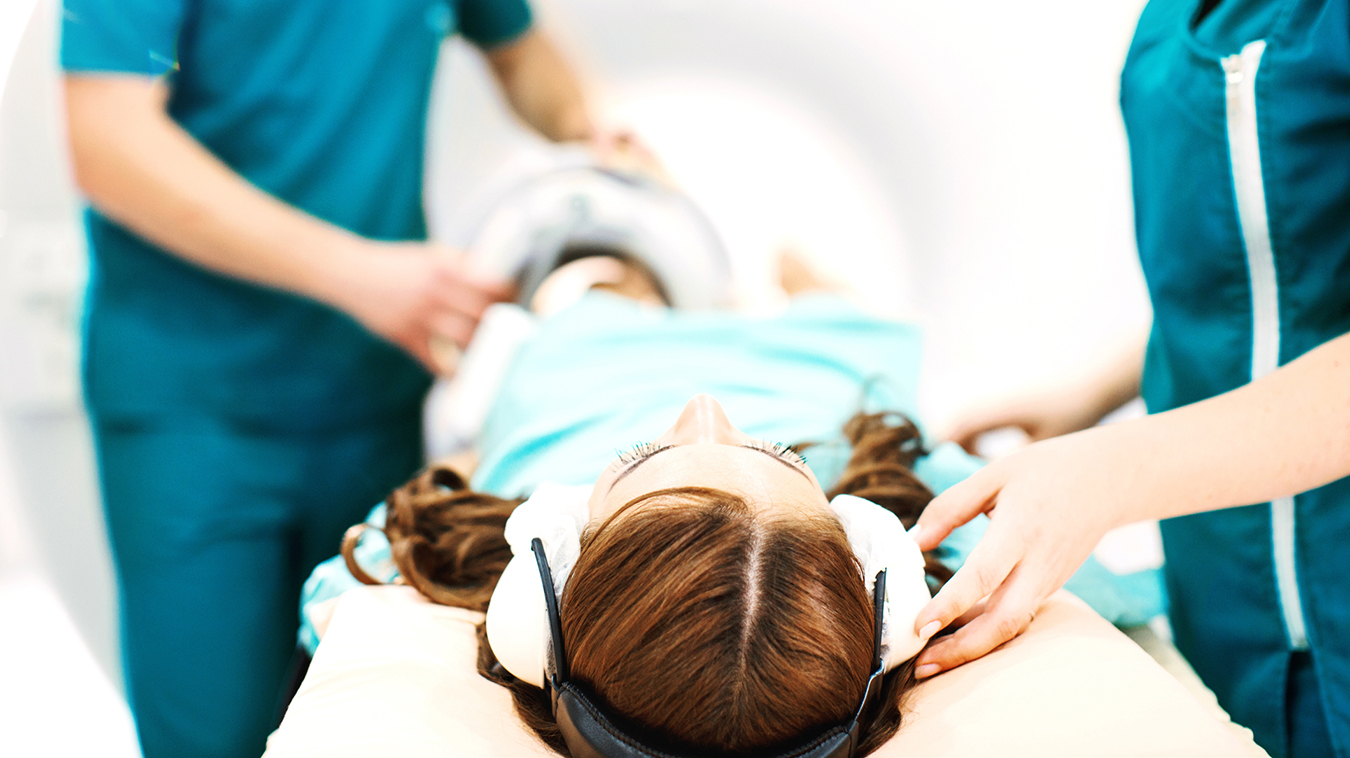TOLL FREE:
1-866-611-2665

Home WHEN IS MRI APPROPRIATE?
Millions of magnetic resonance imaging (MRI) exams are performed each year around the world. Since its development in the 1970s MRI has revolutionized medicine, providing a painless, non-invasive way to examine the inside of the human body in high detail without using radiation.
By exposing hydrogen atoms within our body to a magnetic field, MRI can control the direction and frequency at which hydrogen protons spin. A radio frequency (RF) pulse specific to the “resonance” of hydrogen is directed toward the area of the body we want to examine, while smaller magnets are turned off and on rapidly, in a specific way, to alter the magnetic field on a small, but localized level.
Because normal and abnormal tissue responds differently to an alteration in their magnetic field, a computer can interpret the data and convert it into a picture. Images can be taken of any part of the body with incredible detail, providing doctors with scans of the tissue from a variety of angles and directions.
MRI is often ordered when more detail is needed or the cause of symptoms is unclear on other types of imaging, such as X-ray, ultrasound, and computed tomography (CT). It can help diagnose diseases of the brain, spine, skeleton, abdomen, and soft tissues.
For example, MRI is very good at diagnosing and monitoring many neurological conditions, such as multiple sclerosis, infections, brain tumours, vascular abnormalities including acute stroke and intracranial bleeding, and for assessing the orbits and pituitary gland. It is also excellent for diagnosing spinal cord abnormalities, including demyelination, tumours, or disc herniations and degenerative changes.
There are no known health hazards from temporary exposure to an MRI, and this exam does not use radiation. However, MRI images are taken using a strong magnetic field, which can attract metal objects or may cause metal in your body to move. Before an MRI is performed all internal metal objects will need to be confirmed as safe for an MRI.
For certain types of MRI scans, the magnetic field can change and create loud knocking noises, which require ear protection and may be concerning to some patients. There may also be a risk of allergic reaction to the contrast agent, which can be administered intravenously or directly in a joint. In addition, some patients may find the inside of the MRI scanner to be uncomfortably small and may experience claustrophobia. Mayfair’s scanner bed has a weight capacity of 227 kilograms (500 pounds).
Mayfair Diagnostics has been performing MRIs in Calgary since 1999, in Regina since 2015, and in Saskatoon since 2020.
In Alberta, Mayfair provides both 1.5T and 3T MRI services. These private pay exams are offered at our Mayfair Place location and are not covered by Alberta Health Care.
In Saskatchewan, we provide MRIs at our Regina and Saskatoon clinics as a publicly funded, community-based service under contract with the Saskatchewan Health Authority and as a private pay exam. Private MRI services in Saskatchewan are provided in accordance with and under the legislation of the Province of Saskatchewan.
Whether public or private, an MRI must be requested by a health care practitioner. To determine whether it’s appropriate for you, your doctor will often review your medical and family history, risk factors, how long symptoms have been present, and how they affect daily activities.
If a private MRI is indicated as a best next course of action, your doctor will provide you with a requisition and preparation instructions for your exam. You will then be able to book the appointment. In the case of a public MRI in Saskatchewan, your health care practitioner will forward your name and we will contact you to arrange an appointment.
The exam may take between 30-60 minutes, depending on the type of exam, the body party to be imaged, and the concern being investigated.
Once your exam is completed, your images will be reviewed by a specialized radiologist who will compile a report that is sent to your doctor. Mayfair Diagnostics is owned and operated by over 50 radiologists who are fellowship-trained in radiology sub-specialties, such as neuroradiology, body, cardiac, musculoskeletal imaging, etc. This allows for an expert review of your imaging by the applicably trained radiologist.
Your images will be uploaded to a provincial picture archiving and communication system (PACS) – this technology provides electronic storage and convenient access to your medical images from multiple sources, such as your doctor, specialists, hospitals, and walk-in clinics.
Your doctor will review your images and the report from the radiologist and discuss next steps with you, such as a treatment plan or the need for further diagnostic imaging or lab tests to ensure an accurate diagnosis.
For more information about our MRI services, please visit our services page.
REFERENCES
Edelman, R. R. (2014) “The History of MRI Imaging as Seen through the Pages of Radiology.” Radiology, vol. 273, No. 2S. www.pubs.rsna.org. Accessed October 18, 2022.
Mayo Clinic Staff (2021) “MRI.” www.mayoclinic.org. Accessed October 18, 2022.
National Institute of Neurological Disorders and Stroke (2019) “Neurological Diagnostic Tests and Procedures Fact Sheet.” www.ninds.nih.gov. Accessed October 18, 2022.
Radiological Society of North America (2020) “Body MRI.” www.radiologyinfo.org. Accessed October 18, 2022.
Tretkoff, E. (2006) “This Month in Physics History – July, 1977: MRI Uses Fundamental Physics for Clinical Diagnosis.” www.aps.org. Accessed October 18, 2022.
Our Refresh newsletter delivers the latest medical news, expert insights, and practical tips straight to your inbox, empowering you with knowledge to enhance patient care and stay informed.
By subscribing to our newsletter you understand and accept that we may share your information with vendors or other third parties who perform services on our behalf. The personal information collected may be stored, processed, and transferred to a country or region outside of Quebec.
Please read our privacy policy for more details.